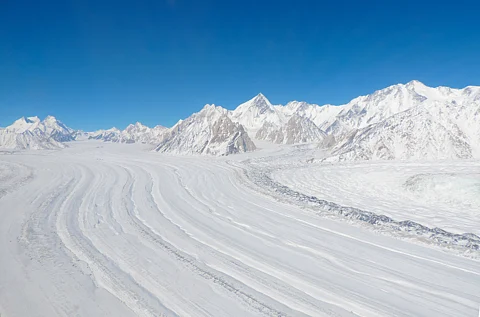
- Destinations
- Experiences
- Stay
- What's new
- Celebrating People
- Responsible Tourism
- CampaignsCampaigns
- Subscribe
- Buy Now

Ladakh Lieutenant Governor Kavinder Gupta has revealed ambitious plans to develop the iconic regions of Siachen and the Galwan Valley into unique, sustainable tourist destinations, highlighting their potential to attract visitors from across the globe.
Speaking at a felicitation ceremony hosted by Bharat Vikas Parishad, Gupta described Ladakh as “far more beautiful than Switzerland” and said the Union Territory could emerge as one of the world’s most sought-after travel destinations. He underscored the government’s commitment to showcasing not just Ladakh’s raw natural beauty, but also the indomitable spirit of bravery and sacrifice that defines its frontier zones.
He also outlined a broader vision for Ladakh’s development, stressing that the administration is actively promoting eco-friendly tourism, upgrading infrastructure, and improving regional connectivity with support from the central government. “Our vision is to build a sustainable and empowered Ladakh,” he said, emphasising the need to balance world-class travel opportunities with the preservation of the region’s fragile ecosystem.
Ladakh, a union territory in northern India, is a popular tourist destination known for its unique culture, stunning natural beauty, including mountains, valleys, and lakes. It's also famous for its rich Tibetan Buddhist culture, evident in its monasteries, and unique landscape, often referred to as the "cold desert".
The ideal time to visit Ladakh is during the summer months, from May to September, when the weather is mild and most roads remain open, allowing for easier travel and access to popular destinations. In contrast, the winter months—from October to April—bring harsh cold and heavy snowfall, often leading to road closures and limited accessibility across the region.
Ladakh can be reached both by air and by road. The most convenient option is flying into Kushok Bakula Rimpochee Airport in Leh, which is well-connected to major Indian cities such as Delhi, Srinagar, and Jammu. For those seeking a more adventurous journey, Ladakh is also accessible by road. Travellers can drive to Leh either from Srinagar via Kargil or from Manali via Keylong. Both routes offer breathtaking views but can be demanding, particularly during periods of harsh weather or road closures.
To visit certain restricted areas of Ladakh—such as Pangong Lake, Tso Moriri, and Nubra Valley—travellers are required to obtain Inner Line Permits. These permits can be conveniently secured online via the Leh District Permit Tracking System or arranged through local tour operators in Leh.
When packing for Ladakh, it's important to dress in light layers and include warm clothing such as jackets, thermals, and sweaters—even during the summer months, as temperatures can drop unexpectedly. Essentials like sunscreen, lip balm, sunglasses, a first-aid kit, and sturdy walking shoes are a must. To stay hydrated while being environmentally conscious, carry a reusable water bottle and avoid using single-use plastic bottles.
